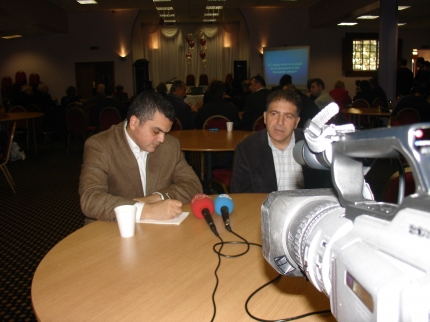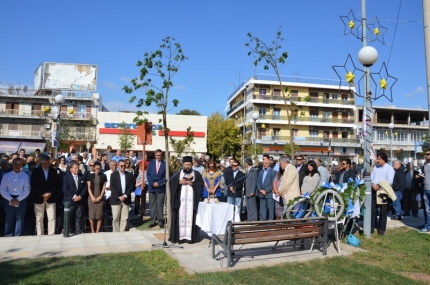In line with the conference theme – ‘Labor Women: Lead, Challenge, Inspire’ — delegates from Australian Labor Party branches all over the country also recognised the fact that the genocides of the Armenians, Hellenes and Assyrians are an integral part of the Australian story, where Australian women led, challenged and inspired others to follow.
In the words of delegate and Return To Anatolia Chairperson, Mrs Sofia Kotanidis: ‘Recognition and education are also the best means to cultivate understanding, of the past and of the present. Understanding prevents the development of the hatred that leads to genocide.
‘Only by learning about the crimes of the past can we avoid repeating them. This is why the Jewish Holocaust, the Australian Aboriginal experience and other genocides are part of the Australian secondary and tertiary education system’.
Australian women were at the forefront of efforts to raise funds and humanitarian aid for the genocide survivors. It was the first international humanitarian relief effort and Australians were at the forefront.
For example, Australians financially supported the Antelias Orphanage for Armenian boys at Beirut, Lebanon, for over a decade. According to then Secretary of the Armenian Relief Fund, Dora Cohen, "many Australians visiting Antilyas Orphanage feel a thrill of pride when they see the flag of the "Southern Cross" flying from the building there".
The founder of the Soroptimist Club in Australia — Edith Glanville — was active throughout the 1920s and 1930s. She travelled all over the world, including Greece and Syria, promoting awareness of the plight of the destitute women and children.
Eleanor Vokes Mackinnon, founder of the Australian Red Cross, presented an address to the League of Nations’ General Assembly in the 1920s on the Australian relief effort. Jessie Webb and Hilda King worked in refugee camps in Greece and Syria, enabling survivors of the Assyrian Genocide in particular to rebuild their lives.
Arguably the most important was Joice NanKivell Loch. Born near Ingham, Queensland, raised in Melbourne, she lived amongst a community of Hellenic Genocide survivors between 1922 and her death in 1981. At the end of World War One, she worked with refugees in Poland. During World War Two, she helped smuggle Jews out of Nazi-occupied Europe to British Palestine. The rest of her adult life she dedicated to Ouranoupolis, a small town next to Mount Athos, best known as the Holy Mountain.
TEXT OF THE RESOLUTION
That this conference recognise the genocides of the Armenians, Hellenes and Assyrians from 1915 to 1923 is one of the greatest crimes against humanity, and:
(a) joins the Australian Armenian, Australian Hellenic and Australian Assyrian communities in honouring the memory of the innocent men, women and children who fell victim to the first modern genocide;
(b) condemns the genocides of the Armenians, Hellenes and Assyrians, and all other acts of genocide as the ultimate act of intolerance;
(c) recognises the importance of remembering and learning from such dark chapters in human history to ensure that such crimes against humanity are not allowed to be repeated;
(d) condemns and prevents all attempts to use the passage of time to deny or distort the historical truth of the genocides of the Armenians, Hellenes and Assyrians, and other acts of genocide;
(e) recalls the testimonies of ANZAC prisoners-of-war and other servicemen who were witness to the genocides of the Armenians, Hellenes and Assyrians;
(f) recalls the testimonies of ANZAC servicemen who rescued Armenian, Hellene and Assyrian genocide survivors;
(g) acknowledges the significant humanitarian relief contribution made by the people of Australia to the victims and survivors of the Armenian, Hellene and Assyrian Genocides.
Resource:
Assyrian International News Agency



